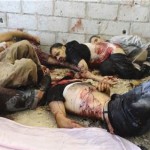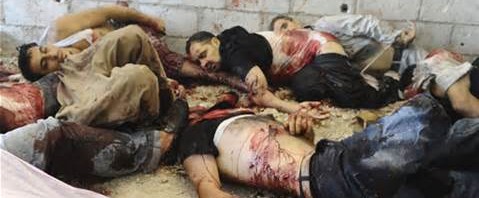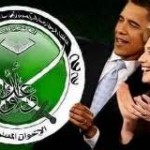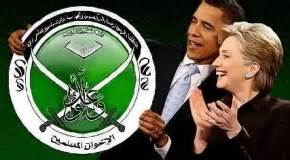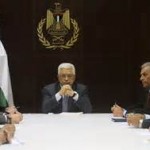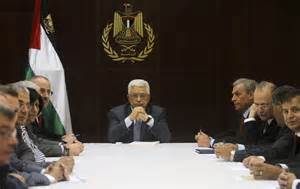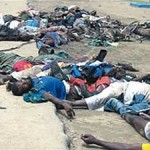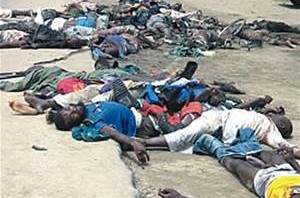Alright, this is going to be a long read, however, the work is presented here for your use and you DO need to spend some time on this.
First it should be known there is a ‘One World Government and a One World Legal System’. Once we admit this, all other items listed below will fall into place. Don’t shoot the messenger.
1. If you don’t think there is no Communist Party influence is government today or one that may live next door, then it is suggested you click here.
2. If you don’t think there are Socialists in government today and influencing earmarks, votes and law, then click here.
3. For the younger generation that does not know about McCarthy or for those who were subjected to revisionist history, this is a good time to click here.

But as a sample of what you need to know, read on….
[1] . . . As we celebrate the birth of this man who with his whole heart and soul hated war, I
would like to be able to speak of peace in our time, of war being outlawed, and of world-wide disarmament. These would be truly appropriate things to be able to mention as we celebrate the birthday of Abraham Lincoln.
[2] Five years after a world war has been won, men’s hearts should anticipate a long peace, and men’s minds should be free from the heavy weight that comes with war. But this is not such a period—for this is not a period of peace. This is a time of the “cold war.” This is a time when all of the world is split into two vast, increasingly hostile armed camps—a time of a great armaments race.
[3] . . . There is still a hope for peace if we finally decide that no longer can we safely blind our eyes and close our ears to those facts which are shaping up more and more clearly. And that is that we are now engaged in a show-down fight—not the usual war between nations for land areas or other material gains, but a war between two diametrically opposed ideologies.
[4] . . . The great difference between our western Christian world and the atheistic Communist world is not political, ladies and gentlemen, it is moral. There are other differences, of course, but those could be reconciled. For instance, the Marxian idea of confiscation the land and factories and running the entire economy as a single enterprise is momentous. Likewise, Lenin’s invention of the one-party police state as a way to make Marx’s idea work is hardly less momentous.
[5] . . . With only those differences, however, the East and the West could most certainly still live in peace.
[6] The real, basic difference, however, lies in the religion of immoralism—invented by Marx, preached feverishly by Lenin, and carried to unimaginable extremes by Stalin. This religion of immoralism, if the Red half of the world wins—and well it may—this religion of immoralism will more deeply wound and damage mankind than any conceivable economic or political system.
[7] Karl Marx dismissed God as a hoax, and Lenin and Stalin have added in clear-cut, unmistakable language their resolve that no nation, no people who believe in a God, can exist side by side with their communistic state.
[8] . . . While Lincoln was a relatively young man in his late thirties, Karl Marx boasted that the Communist specter was haunting Europe. Since that time, hundreds of millions of people and vast areas of the world have fallen under Communist domination. Today, less than 100 years after Lincoln’s death, Stalin brags that this Communist specter is not only haunting the world, but is about to completely subjugate it.
[9] . . . Can there be anyone who fails to realize that the Communist world has said, “The time is now”—that this is the time for the show-down between the democratic Christian world and the Communist atheistic world?
[10] Unless we face this fact, we shall pay the price that must be paid by those who wait too
long.
[11] Six years ago, at the time of the first conference to map out the peace—Dumbarton Oaks— there was within the Soviet orbit 180,000,000 people. Lined up on the antitotalitarian side there were in the world at that time roughly 1,625,000,000 people…in less than 6 years the odds have changed from 9 to 1 in our favor to 8 to 5 against us. This indicates the swiftness of the tempo of Communist victories and American defeats in the cold war. As one of our outstanding historical figures once said, “When a great democracy is destroyed, it will not be because of enemies from without, but rather because of enemies from within.”
[12] The truth of this statement is becoming terrifyingly clear as we see this country each day losing on every front.
[13] The reason why we find ourselves in a position of impotency is not because our only
powerful enemy has sent men to invade our shores, but rather because of the traitorous actions of those who have been treated so well by this Nation. It has not been the less fortunate or members of minority groups who have been selling this Nation out, but rather those who have had all the benefits that the wealthiest nation on earth has had to offer—the finest homes, the finest college education, and the finest jobs in Government we can give.
[14] This is glaringly true in the State Department. There the bright young men who are born with silver spoons in their mouths are the ones who have been worst.
[15] . . . Now, let’s see what happens when individuals with Communist connections are forced out of the State Department. Gustave Duran, who was labeled as (I quote) “a notorious international Communist,” was made assistant to the Assistant Secretary of State in charge of Latin American affairs. He was taken into the State Department from his job as a lieutenant colonel in the Communist International Brigade. Finally, after intense congressional pressure and criticism, he resigned in 1946 from the State Department—and, ladies and gentlemen, where do you think he is now? He took over a high-salaried job as Chief of Cultural Activities Section in the office of the Assistant Secretary General of the United Nations.
[16] . . . Then there was a Mrs. Mary Jane Kenny, from the Board of Economic Warfare in the State Department, who was named in an FBI report and in a House committee report as a courier for the Communist Party while working for the Government. And where do you think Mrs. Kenny is—she is now an editor in the United Nations Document Bureau.
[17] . . . Another interesting case was that of Julian H. Wadleigh, economist in the Trade Agreements Sections of the State Department for 11 years and was sent to Turkey and Italy and other countries as United States representative. After the statute of limitations had run so he could not be prosecuted for treason, he openly and brazenly not only admitted but proclaimed that he had been a member of the Communist Party * * * that while working for the State Department he stole a vast number of secret documents * * * and furnished these documents to the Russian spy ring of which he was a part.
[18] . . . This, ladies and gentlemen, gives you somewhat of a picture of the type of individuals who have been helping to shape our foreign policy. In my opinion the State Department, which is one of the most important government departments, is thoroughly infested with Communists.
[19] . . . I have in my hand 57 cases of individuals who would appear to be either card carrying members or certainly loyal to the Communist Party, but who nevertheless are still helping to shape our foreign policy.
[20] One thing to remember in discussing the Communists in our Government is that we are not dealing with spies who get 30 pieces of silver to steal the blueprints of a new weapon. We are dealing with a far more sinister type of activity because it permits the enemy to guide and shape our policy.
[21] . . . This brings us down to the case of one Alger Hiss who is important not as an individual any more, but rather because he is so representative of a group in the State Department. It is unnecessary to go over the sordid events showing how he sold out the Nation which had given him so much.
[22] . . . When the Un-American Activities Committee called Alger Hiss to give an accounting, President Truman at once issued a Presidential directive ordering all Government agencies to refuse to turn over any information whatsoever in regard to the Communist activities of any Government employee to a congressional committee.
[23] Incidentally, even after Hiss was convicted—it is interesting to note that the President still labeled the exposé of Hiss as a “red herring.”
[24] . . . Ladies and gentlemen, one of the important reasons for the graft, the corruption, the dishonesty, the disloyalty, the treason in high Government positions—one of the most important reasons why this continues is a lack of moral uprising on the part of the 140,000,000 American people.
[25] . . . However, the morals of our people have not been destroyed. They still exist. This cloak of numbness and apathy has only needed a spark to rekindle them. Happily, this spark has finally been supplied.
[26] As you know, very recently the Secretary of State [Dean Acheson] proclaimed his loyalty to a man [Alger Hiss] guilty of what has always been considered as the most abominable of all crimes—of being a traitor to the people who gave him a position of great trust. The Secretary of State in attempting to justify his continued devotion to the man who sold out the Christian world to the atheistic world, referred to Christ’s Sermon on the Mount as a justification and reason therefor, and the reaction of the American people to this would have made the heart of Abraham Lincoln happy.
[27] When this pompous diplomat in striped pants, with a phony British accent, proclaimed to the American people that Christ on the Mount endorsed communism, high treason, and betrayal of a sacred trust, the blasphemy was so great that it awakened the dormant indignation of the American people.
[28] He has lighted the spark which is resulting in a moral uprising and will end only when the whole sorry mess of twisted, warped thinkers are swept from the national scene so that we may have a new birth of national honesty and decency in Government.
Okay take a breather and step outside for some fresh air as the best is yet to come……
Welcome back, you ready?
Congressional Record–Appendix, pp. A34-A35January 10, 1963Current Communist Goals
EXTENSION OF REMARKS OF HON. A. S. HERLONG, JR. OF FLORIDA
IN THE HOUSE OF REPRESENTATIVES
Thursday, January 10, 1963
Mr. HERLONG. Mr. Speaker, Mrs. Patricia Nordman of De Land, Fla., is an ardent and articulate opponent of communism, and until recently published the De Land Courier, which she dedicated to the purpose of alerting the public to the dangers of communism in America.
At Mrs. Nordman’s request, I include in the RECORD, under unanimous consent, the following “Current Communist Goals,” which she identifies as an excerpt from “The Naked Communist,” by Cleon Skousen:
[From “The Naked Communist,” by Cleon Skousen]
CURRENT COMMUNIST GOALS
1. U.S. acceptance of coexistence as the only alternative to atomic war.
2. U.S. willingness to capitulate in preference to engaging in atomic war.
3. Develop the illusion that total disarmament [by] the United States would be a demonstration of moral strength.
4. Permit free trade between all nations regardless of Communist affiliation and regardless of whether or not items could be used for war.
5. Extension of long-term loans to Russia and Soviet satellites.
6. Provide American aid to all nations regardless of Communist domination.
7. Grant recognition of Red China. Admission of Red China to the U.N.
8. Set up East and West Germany as separate states in spite of Khrushchev’s promise in 1955 to settle the German question by free elections under supervision of the U.N.
9. Prolong the conferences to ban atomic tests because the United States has agreed to suspend tests as long as negotiations are in progress.
10. Allow all Soviet satellites individual representation in the U.N.
11. Promote the U.N. as the only hope for mankind. If its charter is rewritten, demand that it be set up as a one-world government with its own independent armed forces. (Some Communist leaders believe the world can be taken over as easily by the U.N. as by Moscow. Sometimes these two centers compete with each other as they are now doing in the Congo.)
12. Resist any attempt to outlaw the Communist Party.
13. Do away with all loyalty oaths.
14. Continue giving Russia access to the U.S. Patent Office.
15. Capture one or both of the political parties in the United States.
16. Use technical decisions of the courts to weaken basic American institutions by claiming their activities violate civil rights.
17. Get control of the schools. Use them as transmission belts for socialism and current Communist propaganda. Soften the curriculum. Get control of teachers’ associations. Put the party line in textbooks.
18. Gain control of all student newspapers.
19. Use student riots to foment public protests against programs or organizations which are under Communist attack.
20. Infiltrate the press. Get control of book-review assignments, editorial writing, policymaking positions.
21. Gain control of key positions in radio, TV, and motion pictures.
22. Continue discrediting American culture by degrading all forms of artistic expression. An American Communist cell was told to “eliminate all good sculpture from parks and buildings, substitute shapeless, awkward and meaningless forms.”
23. Control art critics and directors of art museums. “Our plan is to promote ugliness, repulsive, meaningless art.”
24. Eliminate all laws governing obscenity by calling them “censorship” and a violation of free speech and free press.
25. Break down cultural standards of morality by promoting pornography and obscenity in books, magazines, motion pictures, radio, and TV.
26. Present homosexuality, degeneracy and promiscuity as “normal, natural, healthy.”
27. Infiltrate the churches and replace revealed religion with “social” religion. Discredit the Bible and emphasize the need for intellectual maturity which does not need a “religious crutch.”
28. Eliminate prayer or any phase of religious expression in the schools on the ground that it violates the principle of “separation of church and state.”
29. Discredit the American Constitution by calling it inadequate, old-fashioned, out of step with modern needs, a hindrance to cooperation between nations on a worldwide basis.
30. Discredit the American Founding Fathers. Present them as selfish aristocrats who had no concern for the “common man.”
31. Belittle all forms of American culture and discourage the teaching of American history on the ground that it was only a minor part of the “big picture.” Give more emphasis to Russian history since the Communists took over.
32. Support any socialist movement to give centralized control over any part of the culture–education, social agencies, welfare programs, mental health clinics, etc.
33. Eliminate all laws or procedures which interfere with the operation of the Communist apparatus.
34. Eliminate the House Committee on Un-American Activities.
35. Discredit and eventually dismantle the FBI.
36. Infiltrate and gain control of more unions.
37. Infiltrate and gain control of big business.
38. Transfer some of the powers of arrest from the police to social agencies. Treat all behavioral problems as psychiatric disorders which no one but psychiatrists can understand [or treat].
39. Dominate the psychiatric profession and use mental health laws as a means of gaining coercive control over those who oppose Communist goals.
40. Discredit the family as an institution. Encourage promiscuity and easy divorce.
41. Emphasize the need to raise children away from the negative influence of parents. Attribute prejudices, mental blocks and retarding of children to suppressive influence of parents.
42. Create the impression that violence and insurrection are legitimate aspects of the American tradition; that students and special-interest groups should rise up and use [“]united force[“] to solve economic, political or social problems.
43. Overthrow all colonial governments before native populations are ready for self-government.
44. Internationalize the Panama Canal.
45. Repeal the Connally reservation so the United States cannot prevent the World Court from seizing jurisdiction [over domestic problems. Give the World Court jurisdiction] over nations and individuals alike.
It is any wonder know that inside the State Department for the past 50+ years it is almost impossible to really know what is going on much less how much money is being thrown around without ANY accountability?
Please share this….

